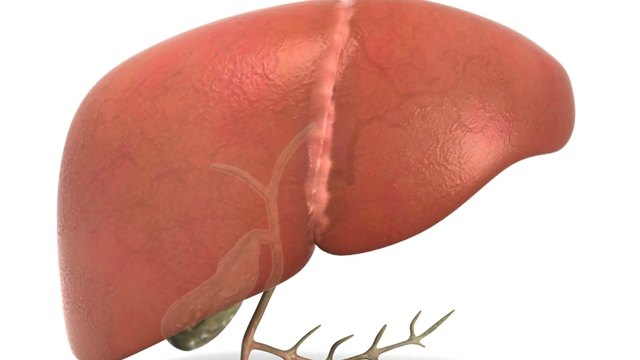Researchers have identified one possible cause of nonalcoholic fatty liver disease, a common disorder in which fat builds up in the liver with potentially life-threatening downstream effects, including inflammation, cirrhosis, and cancer. In the study, published today (September 19) in Cell Metabolism, the researchers isolated from the feces of people with liver disease strains of Klebsiella pneumoniae that produce up to about five times as much alcohol as strains of the same species found in healthy people. When the researchers transferred the microbes to mice, the animals developed symptoms of nonalcoholic steatohepatitis (NASH), a version of nonalcoholic fatty liver disease (NAFLD) that involves inflammation and cell damage.
“Other bacteria have been shown to make alcohol, so that . . . verifies what other researchers have seen,” says Susan Baker, a pediatric gastroenterologist at the University at Buffalo who was not involved in the study.
The study started with a patient who was seeking medical care for high levels of blood alcohol despite not having had any drinks. Whereas the legal limit in most states in the US is 80–100 mg/dL of blood alcohol, this person’s level was 400 mg/dL. Jing Yuan of the Capital Institute of Pediatrics in China and colleagues diagnosed the patient with NASH and auto brewery syndrome, where alcohol is produced via fermentation in the gut after eating carbohydrates.
Because anti-fungal medications failed to improve the patient’s symptoms, the team determined that the gut microbiota was the culprit. From the patient’s fecal samples they isolated two strains of K. pneumoniae that produced large amounts of alcohol in culture.
The researchers hypothesized that these strains of the bacterium might also be underlie NAFLD, as in those cases patients’ livers harbor damage similar to that from heavy, long-term drinking, but they aren’t heavy drinkers. They sampled gut microbes from 43 people with NAFLD and 48 healthy controls. In about 60 percent of the people with liver disease, they found high–alcohol producing strains of K. pneumoniae.
Then they fed these bacteria to mice. The rodents developed symptoms of NASH that were reversible with antibiotic treatment, while those that received low–alcohol producing microbes showed no signs of disease. That this strain gave mice NASH is interesting, Baker explains, “because almost all of the mouse models that we’ve had available for NASH have been kind of bad. We’ve never really been able to induce the inflammation that you see [in people], but they were able to do that.”
“Increased levels of this bacterial strain might be one causative agent of NAFLD in humans,” writes Yuan in an email to The Scientist. She hypothesizes that bacteria carried in the gut of the patient induce the generation of alcohol, which then accelerates disease development.
“They certainly do show that the strain is involved. They’ve done beautiful work to support that observation,” says Baker, adding that she wonders about the conclusion that there is a causal relationship between this bacterial strain and NASH. “That may be a little bit of a jump, particularly because we know other bacteria can make alcohol that colonize the [gastrointestinal] tract and make quite a lot,” she explains.
Plus, the authors did not find the high–alcohol producing K. pneumoniae in all of the subjects in their NAFLD cohort, Baker says. “Perhaps in these patients it was causal. Perhaps in other patients other bacteria might be.”
“Klebsiella [appears to be] important in this Chinese population, but is it important in other populations?” asks Bernard Fromenty, a researcher at INSERM in France who did not participate in the work. Addressing that question and investigating whether or not other compounds in the gut microbiota may have a negative effect on the liver will be important future directions, he says. “NAFLD presents a very complex picture and probably many factors are playing a role.”
The main question raised for Johanna DiStefano, a researcher at the Translational Genomics Research Institute in Arizona who did not participate in the study, is where the K. pneumoniae (Kpn) comes from. “Everyone has Kpn in their gut,” she explains, “so did these people have Kpn that went rogue for whatever reason? Did the presence of fatty liver disease cause Kpn to start producing more alcohol or was it a dietary thing or did the patient just pick up these special high–alcohol producing Kpn bugs along the way somewhere?” Knowing more about its origins could make a difference in how it’s handled clinically, she says.
“Targeting these bacteria might provide some benefits for treatment of these patients,” Yuan agrees. The team did successfully treat its first patient with the high blood alcohol levels with a combination of antibiotics and dietary changes.







